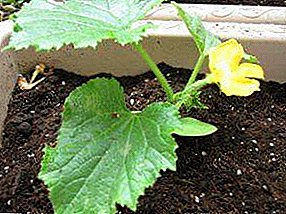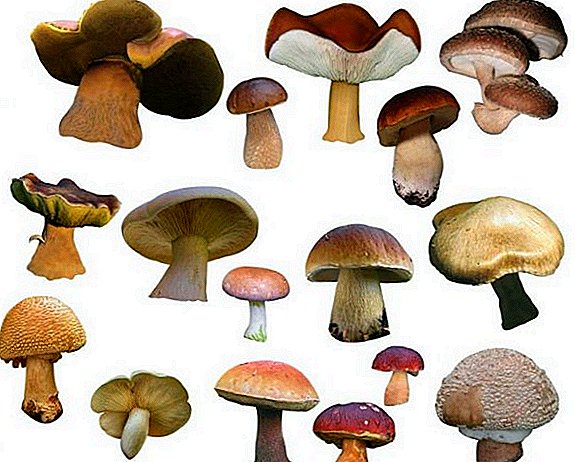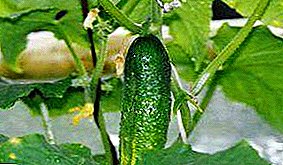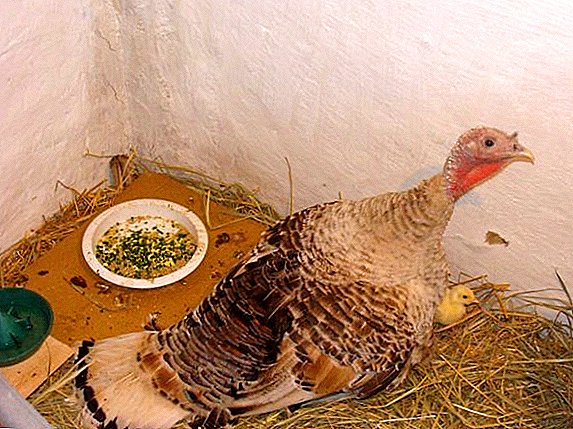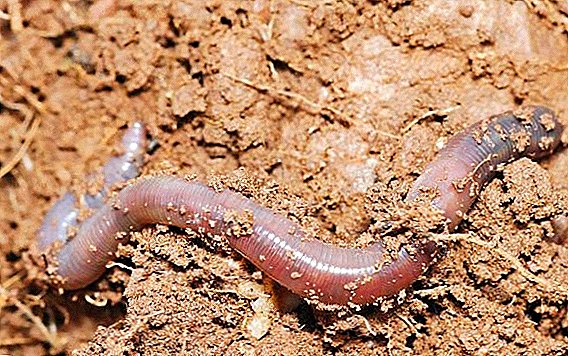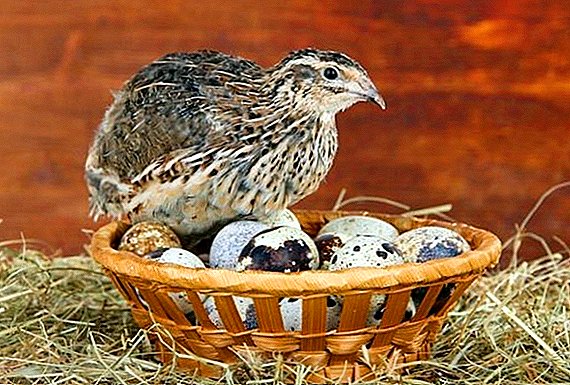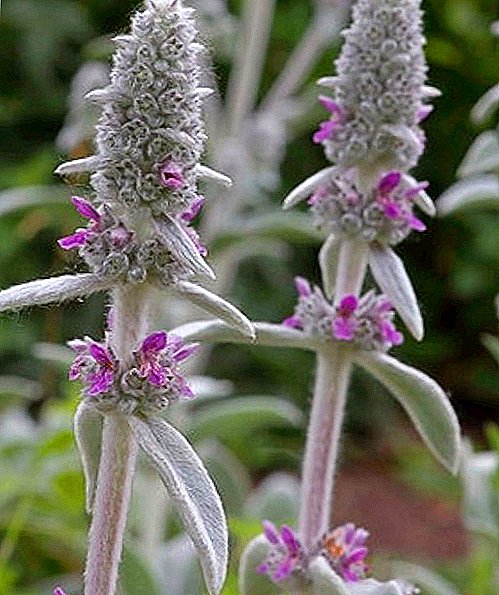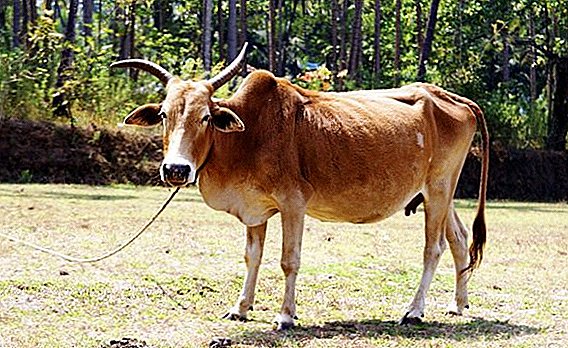 There are many breeds of cows in the world that are used for different purposes, but India will become a paradise for each of them. The Indian humpback cow, zebu, which differs from our cows by a well-marked hump at the base of the neck, is considered the most notable representative on this land. Where did such wonderful animals come from, what kind of life they lead in modern realities and how they can serve people - this will be discussed further.
There are many breeds of cows in the world that are used for different purposes, but India will become a paradise for each of them. The Indian humpback cow, zebu, which differs from our cows by a well-marked hump at the base of the neck, is considered the most notable representative on this land. Where did such wonderful animals come from, what kind of life they lead in modern realities and how they can serve people - this will be discussed further.
Origin
Zebu is a subspecies of the wild bull, which is often found in India today. This cow, unlike many of its other relatives, is not considered a descendant of the tour, but rather acts as a separate species, formed more than 300 thousand years ago. For Hindus, zebu is a sacred animal, and some deservedly consider the territory of the state to be the birthplace of this breed line. In addition, if you believe the historical data, in the past, humpbacked cows were found in the territory of South Asia, which is why disputes often arise over a specific place of their origin.
Read about the best meat and dairy breeds of cows.
Starting from the twentieth century, breeders began to cross zebu with European cows, which was supposed to increase the resistance of new animals to high temperatures and give them immunity to resistance to tropical ailments. The resulting cows today are also distinguished by higher rates of productivity, growth rate, which favorably distinguishes them against the background of purebred zebu.  Today, European hybrids are found even in African countries, only attitude towards them can hardly be called courteous: like many years ago, wild tribes still sacrifice them to the gods, although at other times they may be considered holy. In the modern world, these animals can be found on the territory of Azerbaijan, Europe, Africa, India and even Brazil, and in Madagascar they are even considered a symbol of the island.
Today, European hybrids are found even in African countries, only attitude towards them can hardly be called courteous: like many years ago, wild tribes still sacrifice them to the gods, although at other times they may be considered holy. In the modern world, these animals can be found on the territory of Azerbaijan, Europe, Africa, India and even Brazil, and in Madagascar they are even considered a symbol of the island.
Did you know? Many believe that even in our time there are more zebu cows in Madagascar than the inhabitants themselves. These animals are considered here as a symbol of prosperity and well-being.
Appearance
As a result of centuries-old crossings today, there are more than 80 subspecies of zebu, mostly living in India. It is therefore not surprising that some of the characteristics of each of them will be individual, but in general, the description is always the same. Most of them are massive animals weighing about 400-450 kg, 150 cm tall and 160 cm long (typical for large breeds). True, there are also dwarf zebu varieties not more than 90 cm tall and weighing within 150 kg.  They are kept more like pets, since you will not get much milk and meat from them. The general exterior characteristics of both types of cows include the following:
They are kept more like pets, since you will not get much milk and meat from them. The general exterior characteristics of both types of cows include the following:
- strong and rather muscular body with very massive bones;
- narrow and shallow chest;
- long and slender limbs;
- well-marked hump in the zone of withers (it consists of adipose and muscle tissue, and in total it takes about 3% of the weight of the animal);
- a fold of skin located in the neck and peritoneum;
- long and slightly curved horns in bulls;
- thick skin.
 Dwarf zebu Color coarse and short stubble of an animal can be absolutely anything: black, white, red and variegated.
Dwarf zebu Color coarse and short stubble of an animal can be absolutely anything: black, white, red and variegated.
Important! Zebu is much less susceptible to attacks from ticks and other insects, which simply cause a lot of trouble to other cows. If one of them bites a cow, then a large number of white blood cells in their bodies will help to cope with the infection.
Lifestyle and behavior
A common feature of all zebu cows is high endurance and the ability to survive even where other animals may die from the heat. The character is flexible, non-conflict, so that the owners do not have much trouble with them. At the same time, breeding of dwarf varieties on European territory is also very beneficial from an economic point of view, since competition in this direction is very weak, if it exists at all.  Animals quickly reach sexual maturity, and their meat is often used as a delicacy in various restaurants. Zebu feeds and conditions are unpretentious, so they can be contained, just like other breeds that are more familiar to us. The amount of daily milk yield will be quite enough for all members of a small family.
Animals quickly reach sexual maturity, and their meat is often used as a delicacy in various restaurants. Zebu feeds and conditions are unpretentious, so they can be contained, just like other breeds that are more familiar to us. The amount of daily milk yield will be quite enough for all members of a small family.
Get acquainted with the peculiarities of breeding such cattle breeds: Jersey, Schwyz, Krasnogorbat, Ayrshire, Limousin.
Spheres of use
Considering the fact that zebu do not belong to highly productive breeds (one cow produces on average about 500-1000 liters of milk), large varieties are often bred for the purpose of producing meat and as tractive force. In some countries, these animals participate in horse racing and rodeo.  Despite the fact that milk zebu give a little, it is always very fat (5-7%), for which it is valued by consumers in many countries. For example, such milk is an ideal raw material for creating the famous ghee ghee.
Despite the fact that milk zebu give a little, it is always very fat (5-7%), for which it is valued by consumers in many countries. For example, such milk is an ideal raw material for creating the famous ghee ghee.
Did you know? While in India, cows are considered sacred animals, and their meat is forbidden to be eaten, in Brazil, zebu form the basis of the meat industry, and the slaughter yield of certain species often reaches 48%.Zebu is an ideal option for connoisseurs of exotic who want to surprise their compatriots, and with the right approach to their breeding will be able to bring considerable profit. For this reason alone it is worth learning more about these unusual cows.


